The word craft feels so provincial and unambitious. None of these artists working with ceramics and porcelain could ever be pigeonholed in a category so small and unimaginative. Ceramics have been reborn in recent years, placed firmly in an art context. These are ten of the most interesting artists working with this sculptural medium.
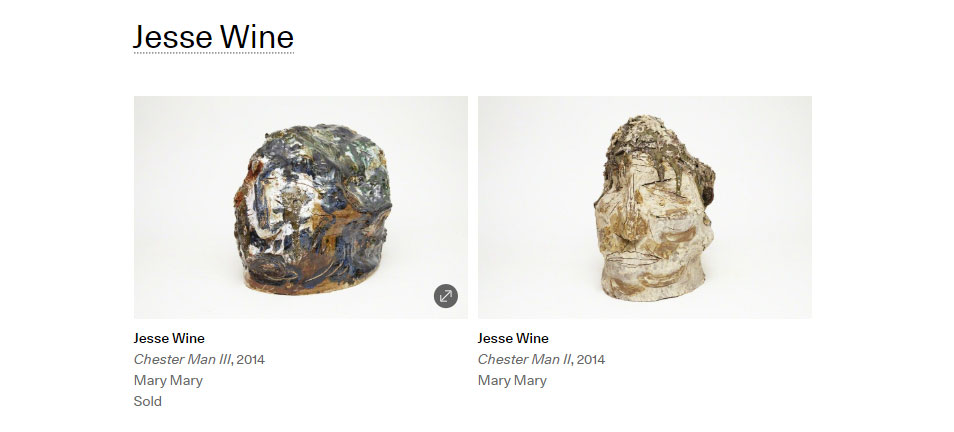
One of the most exciting emerging young British artists working with clay, Wine is currently an artist in residence at the Camden Arts Centre, and recently exhibited with Mary Mary to coincide with the Glasgow International. Wine creates glazed ceramics that resemble saggy arses and rough faces. Here the idea of a functional vessel breaks apart, as the clay falls in on itself.
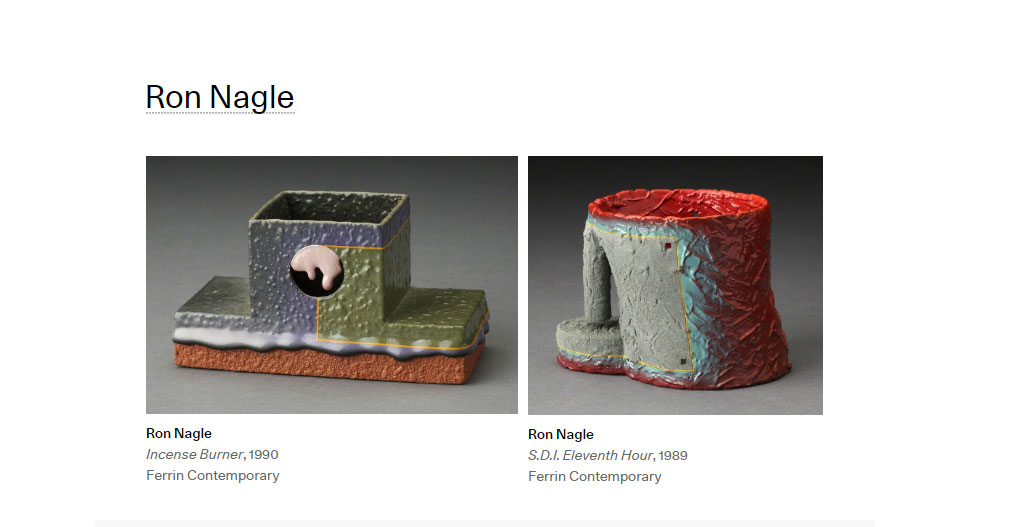
California artist Nagle is one of the grand masters of his medium, with an approach to technique that is unsurpassable. These small works were given a large vitrine in Massimiliano Gioni’s Encyclopedic Palace at the 55th Venice Biennale. Nagle’s perfect sculptural objects employ texture, shape, and colour, feeling like the output of an alien informed by low-rider culture and Japanese zen philosophy.
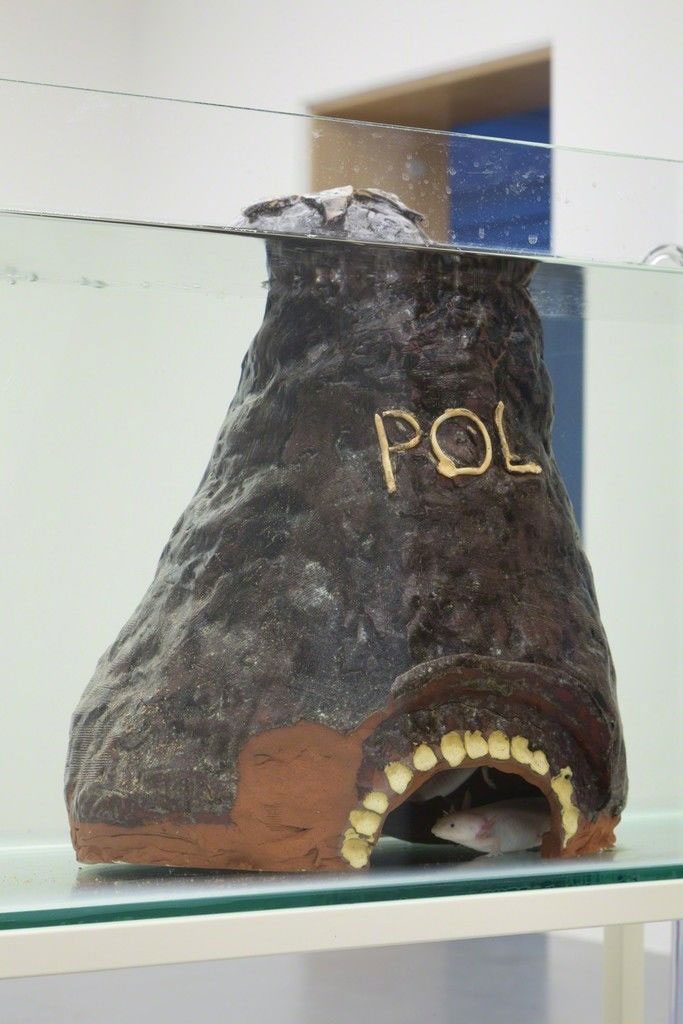
Model for Gallery Peacetime – Police Helmet, 2014
Angell makes glazed, miniature stoneware landscapes, abstract assemblages, and narrative-filled mismade objects. There is something almost painterly about his approach, echoed in his wall pieces and acrylic glass paintings. The artist has also started Troy Town Art Pottery, a “psychedelic ceramic workshop for artists,” inviting four resident artists to play with the medium.
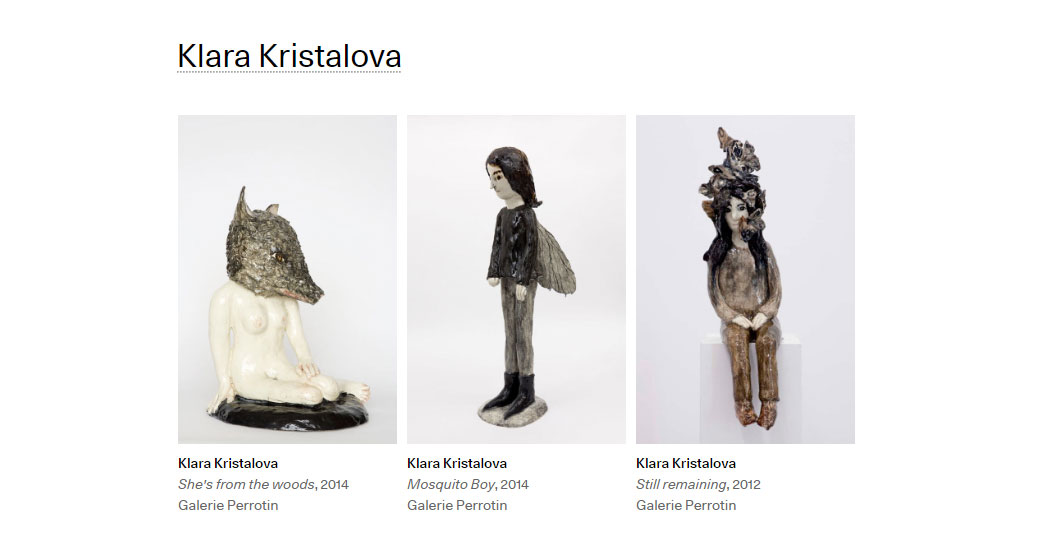
This Swedish artist has created her own dark, graphic world, which has manifested in paintings, drawing, and ceramics. Presenting her ceramics on plinths and in cabinets of curiosities, Kristalova has developed a language that balances nature and memory. Her strange female characters, birds, and other creatures would sit perfectly in the uncomfortable fairytale narratives of Hans Christian Anderson or Heinrich Hoffmann.

Jamie is one of the most unique artists of his generation. His practise has included films, performance, photography, and sculpture. At the Kunsthalle Zurich he filled the glasshouse with monstrous glazed clay masks. His other ceramics, presented on plinths and resembling prehistoric forms, have a textured approach to the medium that makes them look like clay hives or knuckle bones.
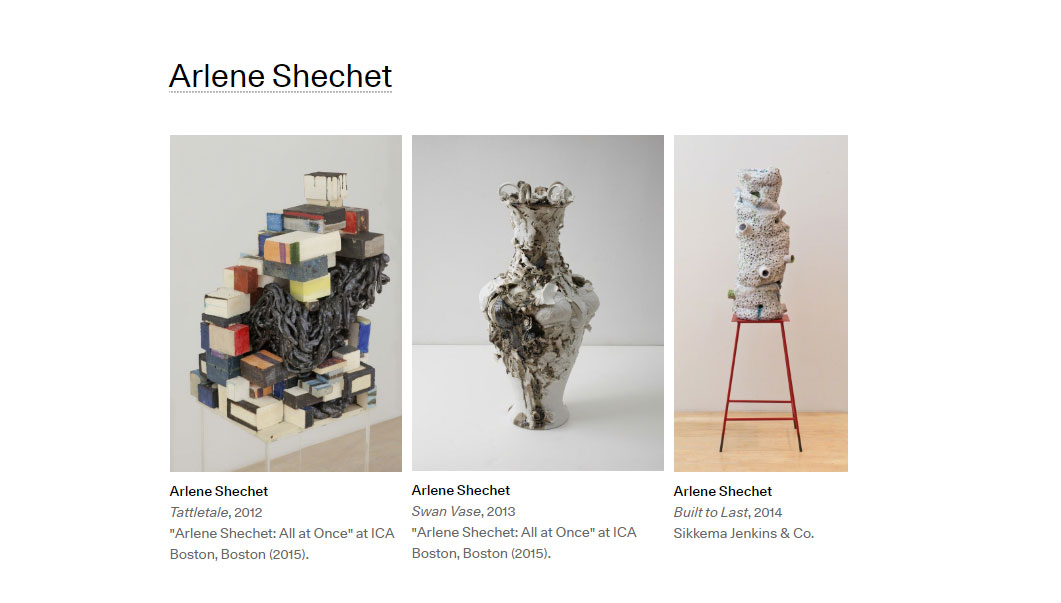
The concept of the vessel is reconsidered in the fat, porous, sprawling ceramic objects of this American artist. The straight lines of kiln bricks contrast to rough, bubbling skin-like textures within single pieces. She also recently appropriated the moulds at the Miessen porcelain factory in Germany for a series of offbeat and irregular reinventions of classical china.

Ruby’s organic ceramics at times appear almost revolting or viscerally unpleasant. His clay lumps and trays are sometimes intentionally misfired and his palette includes sludge grey and blood cell red. These thickly glazed works are often flat trays or vessels, filled with melted, broken fragments resembling clay bones or organs. The intimate pieces are a fascinating echo to Ruby’s larger multimedia sculptures that use everything from bronze to urethane.
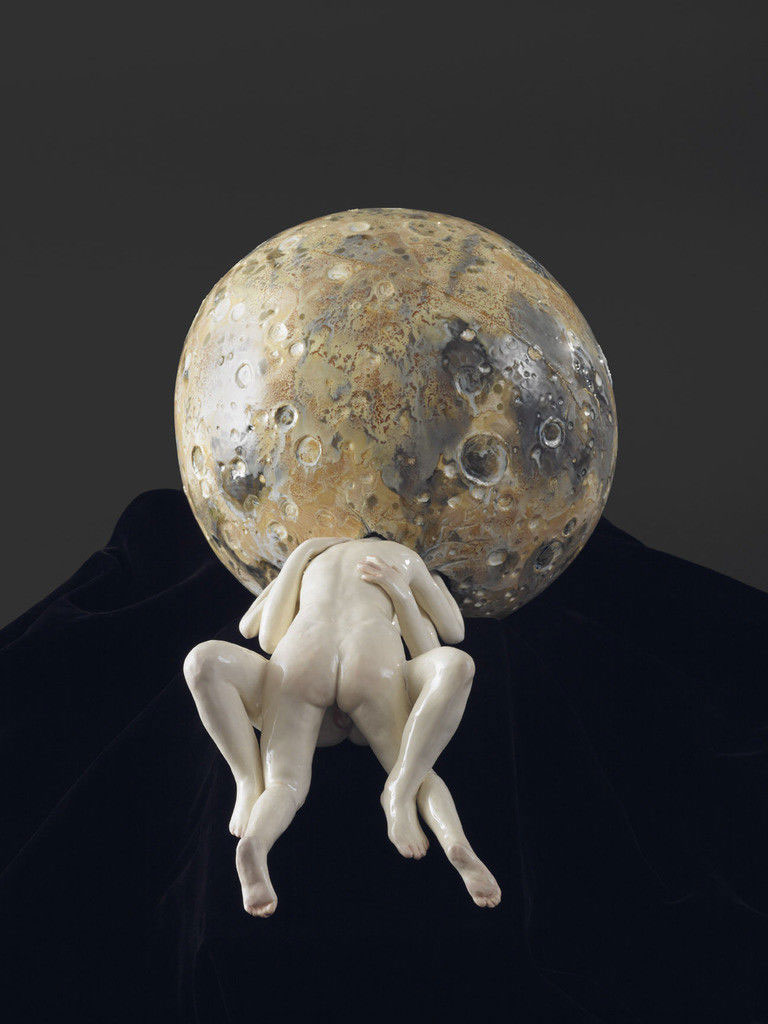
The Canadian artist, who represented her country at the Venice Biennale in 2013, has a varied practise that incorporates collage, projection, sound performance, installation, drawing, and, notably, ceramics. Research into the techniques of the Meissen factories led to Boyle creating an immaculately produced, fantastical, feminist rethinking of classical porcelain objects.

One of the highlights of NADA in New York in 2014, this Icelandic artist’s earthenware trophies play with ideas of masculinity and the iconography of religious idols. His figurative clay objects have a sense of haphazard functionality mixed with a good dose of humour and narrative freedom. Often they are exhibited alongside works on paper depicting male characters playing sport, hanging out, and drinking beer.

Tapping into the
heritage of porcelain, British artist Rachel Kneebone’s white sculptural works are innately sensual. Her amalgams of miniature limbs and curves appear to run fluidly into clusters of delicate forms and figures. The white pieces reference ancient Greek sculpture and the erotic surrealism of Bellmer, and resemble Rodin’s Gates of Hell re-imagined in the form of ice cream.